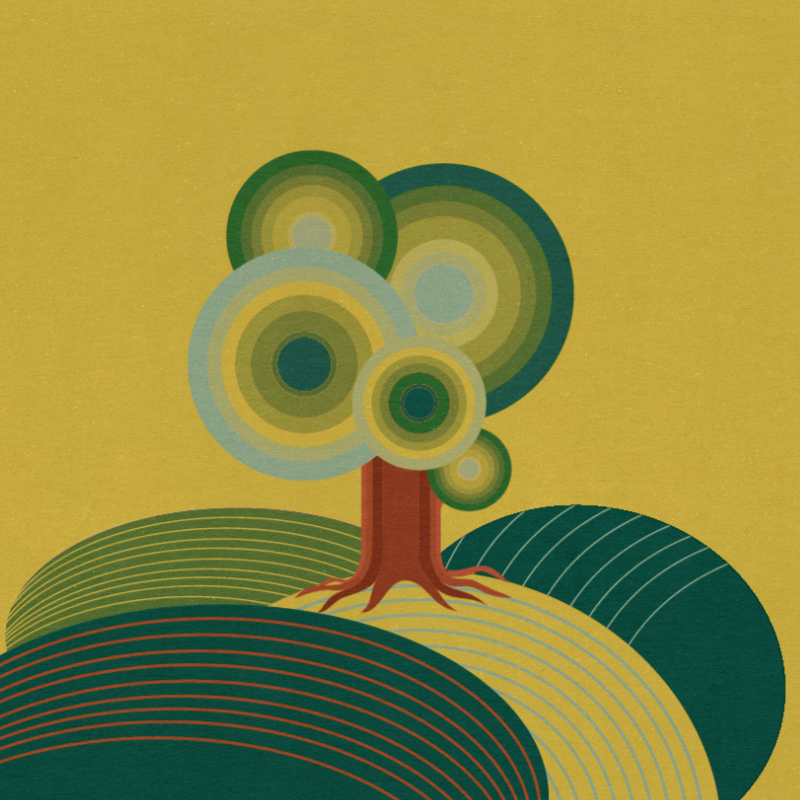The Lithuanian Oak That Is Older Than Lithuania Itself
> BACK TO 100 STORIESAlthough many large and old trees grow in Lithuania, the most famous is the Stelmužė Oak in the village of Stelmužė in the Zarasai district. This tree is the oldest oak in Lithuania and one of the oldest in Europe – it is 1.500 years old. Imagine, this oak is even older than Lithuania, if we count the age of Lithuania from its first mention in historical sources in 1009! Stelmužė Oak also stands out from other trees for its impressive size: it is 23 m high and has a diameter of 3,5 m.
In myths that explain the origin of the world, the oak is associated with the mythological world tree standing in the very center of the world. Its roots penetrate the depths, and its branches support the sky. The world tree symbolises the structure and order of the world. The life of the tree – entering a dormant state when the leaves fall each autumn, and awakening in spring – represents the eternal cycle of life. The world tree is often mentioned in Lithuanian folklore, especially in the songs of calendar ceremonies performed during the holidays dedicated to the changes in the cycle of the year such as Christmas, Mardi Gras, Easter and others.
Because the ancient Lithuanians had a very close connection to the world tree, they not only protected the oaks, but also worshiped them as sacred places – the realm gods. In pagan times – a religion that worships the deities of nature – Lithuanians didn’t have temples, but glorified their gods in forests and groves. An equivalent of the world tree – a special tree (large, strangely bent, possessing several trunks or some other unusual features), often an oak – usually stood in the middle of such groves. Those who broke so much as a twig from such a tree would be cursed by gods and humans.
A story about the fourteenth-century Christian missionary Jerome of Prague, who converted the pagan Lithuanians to Christianity, describes how ancient Lithuanians believed in the powers of sacred trees and forests and how they would even lie to protect them:
At last Jerome reached other tribes who worshiped the forests given to the spirits and thought that, of all the forests, one alone was worthy of the greatest worship. Jerome spoke for many days to this tribe, explained the truths of our faith, and finally told them to cut the forest down.
When the people came with the axes, no one would dare to touch the sacred forests with iron.
Then Jerome took a double bladed axe, and was the first to cut down one tall tree. Then many others eagerly followed him: some used saws, others hoes and axes started to fell the forest. When they reached the middle of the forest, where a very old oak tree grew, which, people said, was more sacred than all the other trees where the gods lived, for a moment no one dared to touch it. Eventually, as usual, one man stood out, bolder than the others. As he called for help from his friends, who were afraid to touch the senseless tree, he lifted his double bladed axe, swung it back in a wide circle and made to cut down the tree, but hit his calf instead and fell to the ground half-dead. The crowd gathered around him and began to mourn, and to weep, and berate Jerome for persuading them to desecrate the holy place where the gods lived, and all no longer dared to lift their axes.
Then Jerome said that it was only a trick of the devil to confuse people. He told the one who had fallen injured to rise and showed everyone that he was unhurt. Then, he raised his axe and, with the help of others, he brought the huge tree down with a great noise before cutting down the whole forest.
With the introduction of Christianity, the sacred groves disappeared, but respect for exceptional trees — mostly oaks — remained. They continued to be treated as sacred and it was forbidden to break their branches. Lithuanians kept going to pray near such trees until the eighteenth century.

